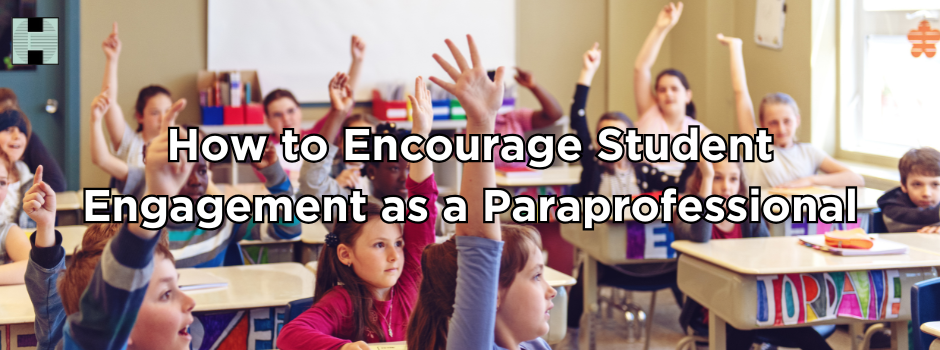Paraprofessionals play an invaluable role within the classroom. As a paraprofessional you’re responsible for providing essential support to both students and the lead teacher to create an inclusive learning environment. One of the most critical aspects of being a paraprofessional is encouraging student engagement. When students are actively engaged in the classroom, they build confidence, develop essential skills, and retain information better. Whether you’re a first year paraprofessional or you’re looking for new strategies, here are our tips on how to encourage student engagement as a paraprofessional in NJ.
How to Encourage Student Engagement as a Paraprofessional
Below are our tips on how to encourage student engagement as a paraprofessional.
- Build Strong Relationships
When you foster strong and genuine relationships with your students, they are more likely to engage in learning when they feel valued and supported. Spend time getting to know your students’ personalities, likes, dislikes, and unique needs. As you foster these strong relationships, show genuine interest and enthusiasm for what they have to say, their progress, or accomplishments. Actively listening to your students makes them feel heard and understood. As you gain your students’ trust, they’ll start to look at you as an ally and they become more receptive to learning. Additionally, these practices will improve their overall engagement and willingness to participate.
- Incorporate Interactive, Collaborative, and Hands-On Learning
It’s important to remember that not every student learns the same way. When you can get your students to interact with each other it often results in an increase in classroom engagement. Collaborative learning is based on student-centered learning. Speak with your main teacher about incorporating hands-on activities, group discussions, peer assessments, and creative projects that encourage students to participate actively. When you allow group work in the classroom, it gives students a platform and chance to explain to other classmates their problem-solving processes. Hearing a classmate’s explanation may get across to another student better than the way the initial lesson did. Incorporating interactive and hands-on activities makes learning more dynamic. Whether it’s a group project, discussion, or role-playing, this type of learning method keeps students involved and motivated.
- Implement Individual Learning Needs
As a paraprofessional, you’ll most likely be working with students that have diverse learning needs. This includes working with students that have different abilities and learning styles. When you work with students who require different learning styles, it’s important for you to remember that providing differentiated instructions based on their diverse needs is a key factor in increasing student engagement. In order to achieve this, take the time to learn each of your students’ strengths, weaknesses, interests, and learning styles. Take the data you’ve recorded and use it to design your instructional approach for each task. Personalized support can really make a significant improvement and difference in how engaged a student feels in their education.
- Offer Positive Reinforcement
Students are more likely to be engaged in learning when they feel encouraged, praised, and rewarded. Encouragement and recognition can go a long way in boosting student engagement. Positive reinforcement refers to a psychological concept where desired behavior is encouraged by adding a reward after the behavior occurs. Over time, it will increase the likelihood of that behavior, in this case classroom engagement, to continue happening. Positive reinforcement fosters a sense of accomplishment and motivates the student to continue displaying these behaviors. In a study done by Brigham Young University, researchers found that when positive reinforcement was incorporated in the classroom, they saw a 30% increase in student focus.
- Maintain a Patient and Positive Attitude
Students can pick up on the energy you’re displaying. If you approach your day and students with patience and a positive mindset, students are likely to reflect that behavior. You’ll want to foster a welcoming atmosphere where students feel safe to express themselves and engage in a more genuine way. When a student feels respected, safe, and valued, they’re more likely to participate and take risks in their learning.
Final Thoughts
Paraprofessionals are the backbone of the classroom. If you have a desire to make a positive impact and difference in students’ lives, consider a paraprofessional job in NJ. By incorporating these strategies, you can help students become more confident, engaged, and successful in their learning journey. Paraprofessionals play a crucial role in shaping students’ learning experiences. If you’re interested in becoming a paraprofessional in NJ, explore our current hot jobs!















